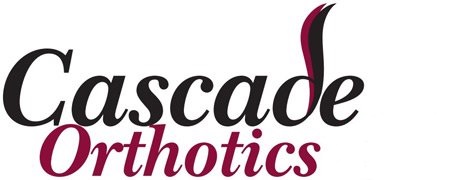Scoliosis is an abnormal lateral (sideways) curvature of the spine. This condition typically also incorporates a degree of spinal rotation.
There are three general types of scoliosis including:
- Idiopathic
- Neuromuscular
- Adult Degenerative
IDIOPATHIC SCOLIOSIS
Idiopathic forms of scoliosis originate from an unknown cause and is typically one of three types:
- Infantile Idiopathic Scoliosis occurs in individuals from birth to age three
- Juvenile Idiopathic Scoliosis can occur in individuals from the age of four to ten
- Adolescent Idiopathic Scoliosis (AIS) is identified in adolescents
Treatment Options
Observation
For less severe curves, it is common to monitor and observe progression through periodic x-rays and physical assessments. It is well accepted that curves will typically progress over time, although the rate of progression can vary greatly. The rate of progression drops drastically upon skeletal maturity when an individual stops growing.
Bracing
For curves that are moderately severe, there is good evidence to support the use of bracing in order to manage the curve throughout the growing years (Weinstein et al., 2013).
The decision to use a brace or not is typically made by a pediatric spinal surgeon based on a number of factors including but not limited to patient age, degree and type of curve as well as rate of progression.
There are numerous types and ways to create a brace. Historically, casting and measurements were the primary methods in which to begin creating a brace. Currently we use a White Light Digital Scanner to accurately capture an individual’s body shape and in conjunction with the use of X-Ray, we will modify the scan to create an asymmetrical dynamic brace to best support the curve. This process has significantly increased the control provided by the brace as well as brace comfort.
Physiotherapy
There is some potentially emerging evidence that in combination with bracing there may be a benefit to physiotherapy in addition to bracing and will be exciting to follow.
Surgery
For severe curves, surgery may be indicated, but this should be a discussion to be had with your surgeon.
NEUROMUSCULAR SCOLIOSIS
This form of scoliosis can result from numerous conditions and is a result of muscular imbalances from inappropriate muscle tone.
Conditions include but are not limited to:
- Cerebral Palsy
- Spina Bifida
- Rett’s Syndrome
- Spinal Muscular Atrophy (SMA)
- Spinal Cord Injury – Paralysis
- Neurofibromitosis
- Ehler’s Danlos Syndrome
- Cerebral Vascular Accident – Stroke
As with idiopathic scoliosis, bracing can provide a role in reducing curve progression. Treatment options should be discussed with your physician or surgeon.
ADULT DEGENERATIVE SCOLIOSIS (ADS)
When scoliosis is identified as an adult, it is identified as Degenerative Scoliosis. As demonstrated in (Schwab, Dubey, Pagala, Gamez, & Farcy, 2003), scoliosis has a large impact on physical and emotional well being which may result in large social and economic repercussions as a result of a loss of independence. Patients with ADS were shown to have significantly lower SF-36 scores than those in normal population (Schwab et al., 2003) and pain is one of the primary symptoms. The SF-36 is a short questionnaire that is used to measure health related quality of life. Back or spinal bracing (TLSO’s) can play a role in prevention of curvatures and reducing pain. In these situations, the goal is to reduce pain, not realign the spine as it is much more rigid than with adolescents or children.
TLSO’s support the spinal position by applying abdominal pressure and increasing lumbar lordosis by creating a three-point pressure system. They also limit spinal mobility, as would a spinal fusion. Many patients are non-surgical candidates, undecided or unable to receive surgery for an extended period of time for a variety of reasons. Additionally, orthotic treatment is an effective alternative to pharmaceuticals and/or facet injections prior to surgery.
It is also thought that the use of custom TLSO’s can potentially enable increased physical activity leading to improved cardiovascular and respiratory function, digestion and bone deposition. Increased overall health could potentially improve future surgical success due to better bone quality and mitigate the potential or severity of fractures during falls.
Treatment options should be discussed with your physician or surgeon.

